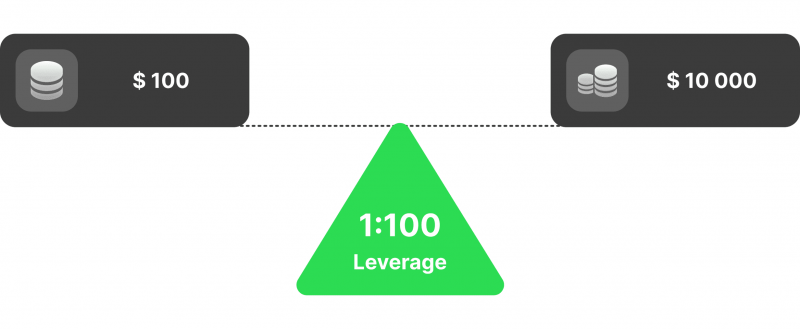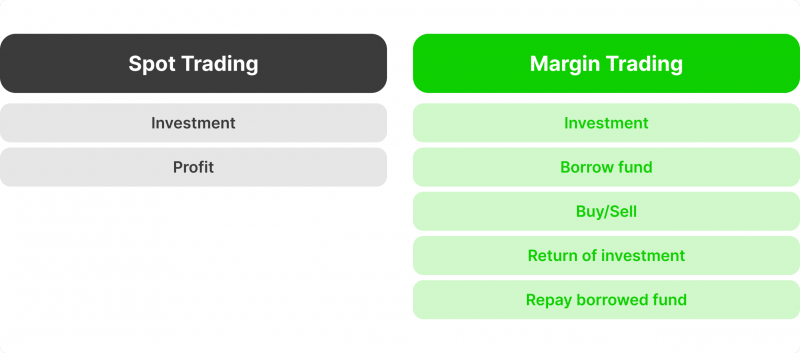Spot vs Margin Crypto Exchanges: Which One Shall You Start?

Most startups face the challenge of which is better: spot vs margin. Let’s explain the difference between these crypto exchange business models and how to launch each.
Today, cryptocurrencies play a major role in investors’ portfolios. Many traditional traders invest in digital assets, and centralised investment firms have started listing crypto assets on their trading desks.
This was primarily attributed to the approval of spot Bitcoin and Ethereum ETFs and the advanced developments these blockchains achieved throughout the years. Therefore, launching a cryptocurrency business is a perfect way to capitalise on this growth.
Key Takeaways
- Crypto spot trading enables users to buy and sell assets at current market prices and transfer ownership over the coin.
- Margin trading entails borrowing from the broker to execute larger orders to pursue higher possible gains.
- White-label crypto exchanges are faster to enter the market without spending more time and money to develop native software.
Understanding Crypto Spot Trading
Spot exchanging entails buying and selling cryptocurrencies on the spot, hence the name. This approach allows users to acquire virtual assets and other securities at the market price and claim ownership over the subject asset.
Similarly, sellers can exchange virtual coins for fiat money by selling their cryptocurrencies at the current market price. Prices at the crypto spot exchange fluctuate according to the demand and supply forces.
Spot exchanging is more straightforward, especially for users who want to get their first coins. When a buy/sell order is placed, the exchange software executes the position immediately and at the same price.
Some price deviations happen when executing, also called slippage. This occurs due to rapid market movements and differs between brokers.

Benefits of Spot Trading
Spot trading is more common and has been practised way before margin and other models existed. Users prefer spot trading their crypto holdings for the following reasons:
- Easier to understand: spot crypto exchanges suit beginner users who want to buy or sell virtual coins for money simply. Users can exchange their holdings with the market in simple steps.
- Suitable for different strategies: Spot buying cryptos is ideal for long-term and short-term traders as it does not involve other contracts or borrowing.
- More secure: Users must afford each spot trade with the money in their balance. Brokers do not offer leverage or lending to execute spot positions.
- More regulations: Crypto spot traders are highly regulated, and financial authorities closely observe these financial activities and enforce strict frameworks.
Launching a Crypto Spot Exchange
Setting up a spot crypto exchange business requires comprehensive research to understand applicable laws and users’ needs.
You can start a crypto exchange from scratch by developing your software, payment processing systems, matching engines, and back-office support systems. You can also facilitate integrations to improve market charts, price updates and news feeds.
Have a Question About Your Brokerage Setup?
Our team is here to guide you — whether you're starting out or expanding.
However, this lengthy process might delay your market entry and cause you to lose opportunities. Therefore, using white-label crypto exchange software allows you to build your desired exchange much faster.
White-label exchange platforms are ready-to-use templates that offer core functionalities and layouts which can be customised to suit your business objectives and preferences. Here’s how you can start:
- Search for a reliable turnkey solution provider and inspect their licenses, testimonials, reputation and reviews.
- Check out the range of services they provide and the supported digital assets (including crypto coins, tokens and stablecoins).
- Research your market to find out the most demanded cryptocurrencies and payment preferences.
- Integrate a payment gateway service to accept transactions in various currencies, including fiat money, e-wallets and cryptos.
- Schedule a meeting with the platform provider to discuss the features you want to add, remove or change.
After launching, start implementing marketing campaigns to spread your brand’s name and offer incentives and bonuses for first users.
Understanding Crypto Margin Trading
Margin trading entails buying and selling cryptocurrencies and other digital assets without having to afford the entire position value. Margin accounts involve borrowing from the broker, which is known as leverage.
Trading with leverage enables investors to open long or short positions by paying a fraction of the total value while the broker finances the remaining amount.
Leverage is calculated in ratios. For example, a 1:100 leverage ratio means that traders can open $100-value positions by paying $1. This allows traders to capitalise on the cryptocurrency market’s massive gains and amplify their potential profits.
For example, traders can buy a Bitcoin without owning $70,000 in the balance. With the leverage 1:100, traders can invest in 1 BTC by paying $700.

Benefits of Margin trading
Before diving into the advantages of crypto margin trading, it is important to highlight the drawbacks of trading with a margin. The investor becomes indebted to the broker, and if the position moves sideways, the trader must pay from their money to compensate the broker. Otherwise, the account may be liquidated.
However, if all goes well, the trader can enjoy the following benefits.
- Higher potential gains: Traders can explore highly rewarding market positions that may increase their possible gains.
- Executing short (sell) orders: Shorting coins and selling during market meltdowns is not available on spot trading. Margin accounts allow borrowing to execute sell positions.
- Placing large orders at less capital: Traders can use the broker’s leverage to execute positions and buy assets they would not otherwise have afforded.
Launching a Margin Crypto Exchange
Crypto margin exchanges facilitate CFD and futures trading, which do not entail asset transfer or actual coin ownership because margin trading means opening a position with borrowed funds.
Trading with margin involves margin requirements and a margin call. This mechanism ensures the position is running and prevents operators from losing money from declining positions. Therefore, to launch a margin crypto exchange, it is essential to do the following.
- Get a legal grasp of the applicable laws and regulations about offering crypto CFDs and leverage restrictions. Some jurisdictions impose limitations on applying leverage on crypto markets.
- Secure sufficient capital by attracting investors and entrepreneurs or using savings and joint ventures. It is crucial to hold a solid buffer while offering margin accounts.
- Adopt advanced technologies to ensure seamless operations of margin trade and maintenance requirements.
- Ensure highly secure protocols, from KYC and AML compliance to ultra-safe blockchain wallets for storing crypto and digital assets.
Spot vs Margin: Which Business is Better?
Spot and margin trading are two popular ways to launch a crypto exchange platform. However, choosing the suitable business model depends on many factors, including your market demand and corporate objectives.

Offering margin trading can be profitable because traders are lured to the possibility of multiplying their gains, and when their chances decrease, your revenues increase.
However, some risks associated with this strategy include financial exposure if you cannot cover the leveraged accounts or assets mismanaged due to market volatility in traders’ preferences and leverage control. While this might be profitable for classic financial markets, crypto traders are different.
Crypto users are increasingly interested in real ownership and transferring the underlying asset or token to their safe wallets. Therefore, offering a spot brokerage exchange platform suits their needs. Here, they can plug in their wallets, buy or sell the desired coin(s), and safeguard their crypto holdings from the broker’s reach.

Exploring Crypto Exchange Turnkey Solutions
Investing in a turnkey solution is a faster way to own a spot brokerage platform without indulging in lengthy development stages. This approach saves you time and money, as you only pay a fraction of the cost to start a crypto exchange from scratch.
Discover the Tools That Power 500+ Brokerages
Explore our complete ecosystem — from liquidity to CRM to trading infrastructure.
White-label crypto brokerage solutions enable you to rely on the provider’s technical expertise to overcome any difficulties you or your users may face. This technology powers many startups to exist, intensifying the competition and creating more chances for businesses and users.
Conclusion
Operating a crypto business comes with plenty of opportunities to make money, especially during market booms when the prices of most coins surge and the demand for trading increases.
However, deciding on the best business model is usually the challenge that many startups face. Choosing spot trading vs margin software relies on your target market.
In fact, customers are becoming more aware of the best security practices, which motivates them to demand full ownership of their crypto assets that spot exchanges offer.
FAQ
What are the key differences between spot and margin crypto trading?
Spot crypto trading involves buying and selling cryptocurrencies at current market prices, giving full ownership of the assets. Margin trading allows traders to borrow funds to execute larger orders, potentially increasing profits but also amplifying risks.
What are the benefits of launching a spot crypto exchange?
Launching a spot crypto exchange is straightforward and caters to users seeking to own and trade cryptocurrencies directly. Spot exchanges are more secure as users have full ownership of their assets and are highly regulated, making them attractive to beginners and those prioritizing security.
What are some of the best crypto margin trading exchanges available?
Some of the best crypto margin trading exchanges include Binance, Kraken, Bitfinex, and Bybit. These platforms offer robust margin trading features, high liquidity, and advanced security measures, making them popular choices among traders looking to leverage their investments.








